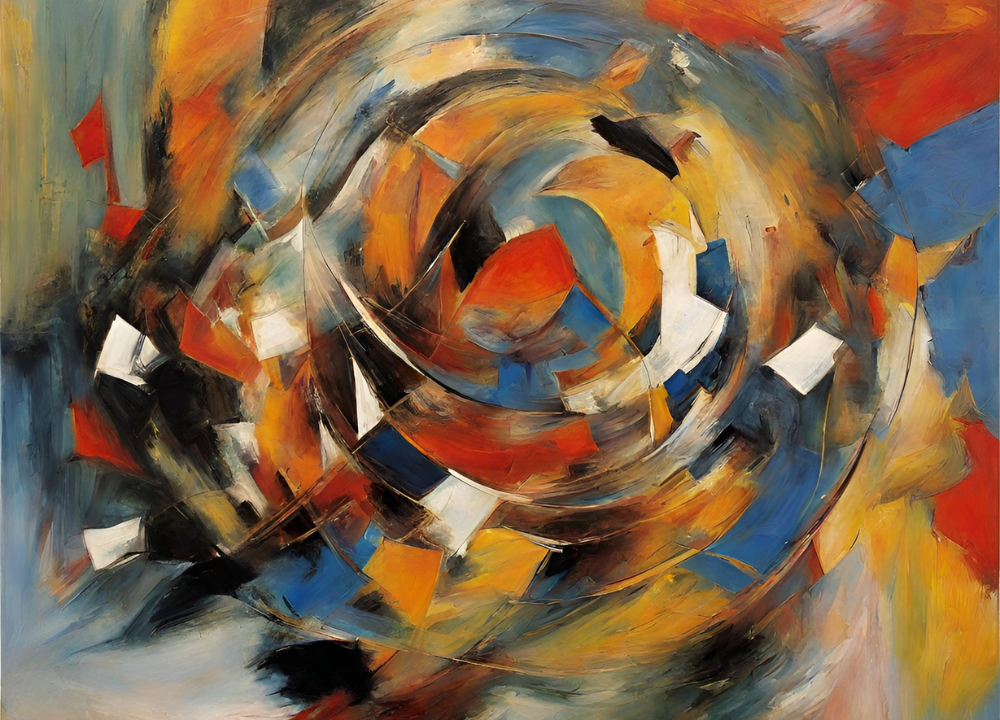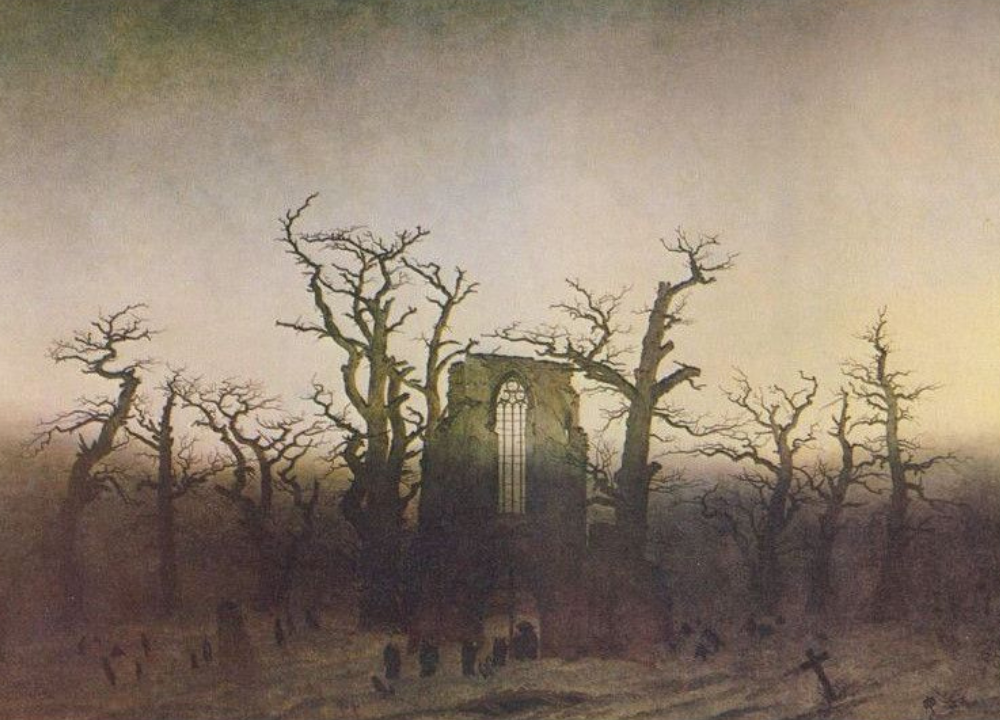Colorful Canvases: The enduring allure of famous abstract art lies in its vibrant expressions and timeless appeal. Abstract art captivates viewers with its bold colors and innovative forms while allowing for personal interpretation.
The Beginning Of Abstract Art
In the vast world of art, there is a genre that stands out for its captivating and thought-provoking nature – abstract art. This unique style of artistic expression emerged in the late 19th and early 20th centuries, breaking away from the traditional representations of the physical world and venturing into uncharted territories. The birth of abstract art marked a radical departure from conventional art forms, paving the way for a new era of creativity and experimentation.
Breaking From Tradition
The advent of abstract art signaled a bold rebellion against the longstanding traditions and established norms of the art world. Artists sought to break free from the constraints of realism and representation, aiming to explore the depths of human emotion, spirituality, and the subconscious mind. By abandoning the need to depict the physical world with precision, abstract art embraced abstraction, ambiguity, and fluidity as its guiding principles.
The Founding Artists
Several visionary artists played pivotal roles in the development and establishment of abstract art as a significant movement. Among them, Wassily Kandinsky, often referred to as the father of abstract art, led the way with his groundbreaking compositions that emphasized color, shape, and form over recognizable subject matter. Kandinsky’s bold use of vibrant hues and geometric patterns opened up new avenues for artistic expression, challenging the conventional understanding of what art could be.
Around the same time, artists like Piet Mondrian and Kazimir Malevich made significant contributions to the abstract art movement. Mondrian’s iconic grid-based paintings explored the harmony and balance of form and color, while Malevich’s daring exploration of pure abstraction through his suprematist compositions pushed the boundaries of artistic possibilities.
Together, these pioneering artists and their contemporaries laid the foundation for abstract art, inspiring countless others to embark on their unique journeys of creative exploration and experimentation.

The Evolution Of Abstract Art
Welcome to the fascinating world of abstract art, where colors, shapes, and emotions come together to create captivating canvases. Over the years, abstract art has evolved, showcasing the diverse creativity of artists and leaving a lasting impact on the art world. Let’s take a closer look at three significant movements in the evolution of abstract art: Cubism and Geometric Abstraction, Abstract Expressionism, and Color Field Painting.
Cubism And Geometric Abstraction
Cubism, pioneered by Pablo Picasso and Georges Braque in the early 20th century, revolutionized the art scene by breaking down traditional perspectives and introducing new ways of representation. Through fragmented forms, multiple viewpoints, and geometric shapes, Cubist artists challenged the notion of realistic representation, giving rise to the advent of Geometric Abstraction. In this movement, artists explored the play between shapes, lines, and colors, creating abstract compositions that emphasized geometric precision and simplicity.
Abstract Expressionism
The Abstract Expressionism movement emerged in the 1940s and 1950s in the United States, with artists such as Jackson Pollock, Willem de Kooning, and Mark Rothko leading the way. This movement focused on spontaneous and gestural forms of expression, often conveyed through bold brushstrokes, drips, and splatters of paint.
Abstract Expressionists aimed to evoke emotions and convey the inner world of the artist, encouraging viewers to interpret their works and form their own connections. By embracing a non-representational approach, Abstract Expressionism opened doors to new realms of artistic exploration, pushing boundaries and challenging artistic conventions.
Color Field Painting
Color Field Painting, appearing in the late 1950s and lasting throughout the 1960s, emerged as a response to the gestural nature of Abstract Expressionism. Artists associated with this movement, such as Mark Rothko, Helen Frankenthaler, and Morris Louis, focused on large areas of flat color, often bordering on monochromatic, with the intent of creating a sense of depth and spirituality.
Color became the primary subject matter, as artists explored the interaction between various hues, the effects of light, and the emotional resonance of color on the viewer. Color Field Painting aimed to create a meditative and immersive experience, inviting viewers to contemplate the power of color and its ability to provoke emotional responses.
The Impact Of Famous Abstract Artists
The world of art has been shaped and transformed by the profound impact of famous abstract artists. These innovative and visionary creators have left an indelible mark on the art world, pioneering new techniques and styles that continue to captivate audiences today. Their contributions have not only expanded the boundaries of artistic expression but have also revolutionized the way we perceive and appreciate art.
Abstract artists have often been at the forefront of experimentation, pushing the boundaries of traditional artistic techniques and styles. Their unique approach to art has allowed them to break away from the constraints of realism and embrace a more subjective and emotional form of expression.
These artists introduced innovative techniques such as collage, drip painting, color field, and action painting. They experimented with unconventional materials, exploring the use of found objects and unconventional painting tools to create textures and effects that were previously unseen. Through their pioneering efforts, they challenged established norms and opened new avenues for artistic exploration.
The impact of famous abstract artists extends beyond their innovative techniques and styles. Their bold and daring approach to art has revolutionized the art world, sparking a shift in artistic paradigms and redefining the very notion of what art can be.
Inspiring Modern Artists:
The art world is replete with contemporary artists who draw inspiration from the groundbreaking work of abstract artists. Their bold use of color, unconventional compositions, and abstract forms reflect the enduring influence of pioneers such as Wassily Kandinsky, Piet Mondrian, and Jackson Pollock.
Critical Reevaluation:
The rise of abstract art prompted a critical reevaluation of the traditional understanding of art. It challenged the notion that art must represent an identifiable subject matter and instead emphasized the importance of the emotional and spiritual dimensions of art.
Expanded Interpretations:
Abstract art has empowered viewers to engage with art on a personal and subjective level. It invites interpretation and encourages individual experiences, allowing each viewer to find meaning and connection in their own unique way.
By challenging established norms and expanding the possibilities of artistic expression, famous abstract artists have forever altered the trajectory of art, leaving a lasting legacy that continues to captivate and inspire artists and art lovers alike.

Interpreting Abstract Art
Abstract art has a certain mystique that has captivated viewers for decades. Its vibrant colors and unique forms draw us in, but what does it all mean? Interpreting abstract art can be a deeply personal experience, as it allows us to delve beyond the surface and discover our own meanings and connections.
Beyond The Surface
Abstract art challenges us to look beyond the surface and explore the depths of our own imagination. It transcends traditional representations, pushing boundaries and inviting us to see the world in new and unexpected ways. By using bold colors, dynamic shapes, and expressive brushstrokes, abstract artists create compositions that ignite our senses and evoke an emotional response.
When we approach an abstract artwork, it’s essential to let go of preconceived notions and open ourselves up to the possibilities it presents. Each viewer will have a unique interpretation based on their personal experiences and perceptions. Rather than searching for a concrete meaning, we should embrace the ambiguity and allow ourselves to be immersed in the artist’s intention.
Finding Personal Meaning
Abstract art provides a platform for self-reflection and introspection. It encourages us to explore our own emotions, thoughts, and memories and find personal meaning within the artwork. The absence of recognizable objects allows our minds to wander freely, creating connections that are deeply personal and subjective.
Engaging with abstract art is an opportunity to tap into our inner creativity and unleash our imaginations. It serves as a catalyst for self-expression, inviting us to embrace ambiguity and make our own interpretations. Every color, brushstroke, and composition can be a metaphor for our own unique experiences, desires, and aspirations.
Interpreting abstract art is a deeply individual process, and there are no right or wrong answers. It’s about connecting with the artwork on an emotional level and allowing it to resonate with our own inner world. Through this process, abstract art becomes a mirror in which we can explore our own depths and discover new facets of our own identity.
So take the time to engage with and interpret abstract art, allowing it to spark your imagination and unlock a world of personal meaning. Let go of expectations and embrace the joy of exploring the depths of your own creativity.
The Role Of Color In Abstract Art
Color plays a crucial role in the world of abstract art. Artists use color to evoke emotions, convey meaning, and capture the attention of the viewer. The power of chromatic choices in abstract art cannot be understated. The right color palette can transform a mere canvas into a powerful statement, leaving a lasting impact on those who observe it.
The Power Of Chromatic Choices
Abstract artists carefully select colors for their artworks, knowing that each hue has its own distinct personality. By choosing certain colors over others, artists can create a desired effect or ambiance within their artwork. This strategic use of chromatic choices allows artists to communicate their intended message and evoke specific emotions in the viewers.
The color palette of an abstract artwork is like a language that speaks directly to the viewer’s subconscious. Each color has its own symbolism and associations, which can vary depending on culture and personal experiences. Artists tap into this visual vocabulary to convey their ideas and perspectives without the need for explicit representation.
Emotional Responses To Color
Colors have the power to elicit strong emotional responses in people. When viewing an abstract artwork, the colors used can evoke feelings of joy, sadness, calmness, or excitement. Different colors have different psychological effects on individuals, triggering a range of emotions.
Bold and vibrant colors, such as red or yellow, can create a sense of energy and exuberance. They can catch the viewer’s attention and make a bold statement. Conversely, cool and muted colors, like blue or gray, can evoke a sense of calmness and tranquility. These colors often elicit introspection and contemplation.
The combination of colors within an abstract artwork can also influence emotional responses. Contrasting colors can create tension or a sense of drama, while harmonious color schemes can generate a feeling of balance and unity.
In conclusion, the role of color in abstract art is paramount. It enables artists to communicate their ideas, evoke emotions, and create visually captivating artworks. Whether through bold and vibrant hues or subtle and subdued shades, color is a powerful tool that artists harness to engage and captivate their viewers.
Appreciating And Collecting Abstract Art
Abstract art has long captivated art enthusiasts and collectors alike with its ability to evoke emotions, challenge perceptions, and spark endless interpretations. The abstract movement emerged in the early 20th century, breaking away from traditional art forms and embracing non-representational expressions of color, line, and form. Appreciating and collecting abstract art allows individuals to surround themselves with thought-provoking creations that inspire creativity and foster a deep connection to the artist’s vision.
Art Market Trends
The art market has experienced significant shifts in recent years, particularly in relation to abstract art. Here are some key trends to consider:
- The rise of digital art platforms and NFTs has opened up new avenues for artists and collectors to engage with abstract artwork on a virtual level.
- Collaborations between artists and fashion brands have elevated abstract art to a wider audience through various mediums such as clothing, accessories, and home decor.
- The demand for abstract art has surged, leading to increased prices and competition at auctions and galleries.
- Emerging artists are gaining recognition, offering unique perspectives and fresh interpretations of abstract art.
Tips For Building A Collection
Building an abstract art collection requires careful consideration and a genuine passion for the art form. Here are some tips to guide collectors:
- Research and educate yourself about different abstract artists, their techniques, and their impact on the art world. This will help you develop your preferences and understand the historical context behind the artworks.
- Visit galleries, art fairs, and museums to immerse yourself in the world of abstract art. Take the opportunity to engage with the artworks personally and speak with experts and artists.
- Establish a budget that suits your financial capabilities and desired level of investment. Remember that collecting abstract art is about personal enjoyment and appreciation rather than solely financial gain.
- Seek guidance from art advisors or consultants who can provide valuable insights and help you navigate the art market.
- Consider starting small and gradually expanding your collection. Don’t be afraid to mix established artists with emerging talents, as this can add diversity and depth to your curated selection.
Expanding your collection of abstract art is an exciting journey that allows you to explore endless possibilities of artistic expression. With a discerning eye and an open mind, you can create a captivating collection that reflects your unique taste and appreciation for the enduring allure of abstract art.
Frequently Asked Questions On Colorful Canvases: The Enduring Allure Of Famous Abstract Art
What Are Some Famous Abstract Art Paintings?
Some famous abstract art paintings include “Starry Night” by Vincent van Gogh, “The Persistence of Memory” by Salvador Dalí, and “Composition VII” by Wassily Kandinsky. These artworks are renowned for their use of color, form, and abstraction to evoke emotions and explore the depths of human creativity.
How Did Abstract Art Emerge As A Movement?
Abstract art emerged as a movement in the early 20th century, primarily as a response to the rise of industrialization and the changing world. Artists sought to break free from traditional representational art and explore new forms of expression, focusing on color, shape, and emotion rather than depicting reality in a literal sense.
What Makes Abstract Art So Appealing?
Abstract art is appealing because it allows viewers to interpret and engage with the artwork in their own unique way. It invites individual emotions, thoughts, and experiences, creating a personal connection between the viewer and the artwork. The use of color, form, and abstraction also adds a sense of intrigue and mystery, stimulating the imagination.
Conclusion
Abstract art continues to captivate audiences with its vibrant colors and expressive forms. From the groundbreaking works of Wassily Kandinsky to the bold brushstrokes of Jackson Pollock, these artists have created masterpieces that transcend traditional boundaries. Their ability to evoke emotions and challenge perceptions is a testament to the enduring allure of abstract art.
Whether you appreciate the intricate details or simply enjoy the visual feast, exploring famous abstract artworks is a journey that never ceases to amaze. So, embrace the beauty and let your imagination run wild amidst these colorful canvases. Experience the magic of abstraction for yourself and discover the endless possibilities that lie within each brushstroke.




